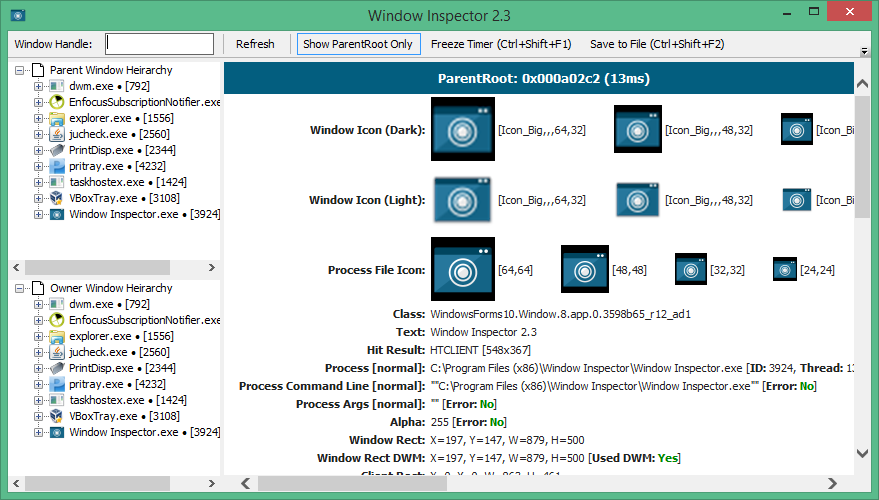
#Windows ui inspector install
Next, install the Windows SDK so you can use Inspect utility to investigate applications for their elements.Įvery object in a native application has a variety of elements (or “locator types”) associated with it, and we are especially interested in a handful of them.
#Windows ui inspector update
Install the WinAppDriver first, and in “ Windows Settings > Update & Security > For Developers:” select the option to enable Developer mode. READ MORE Tips for Writing Good Automated Tests

MS Windows Inspect – Available in the Windows SDK, this handy app helps you find elements to interact with objects in native applications.MS WinAppDriver UI Recorder – This tool will help you find xPaths, in the event other elements aren’t available.MS WinAppDriver – This leverages the Selenium WebDriver protocol and allows us “web element-like” access to elements in native applications in Windows 10.To locate and leverage elements in native applications, we’ll need to download a few free Microsoft utilities: Sometimes objects will use the same identifiers or perhaps certain elements will just outright refuse to work because the “Test Automation Gods” don’t want to make things too easy for you, and in those instances, you can still automate but it will take a bit more effort. Windows native applications on the other hand can be tricky, as we need to take a few extra steps to track down unique identifiers for the objects that we want to interact with and control.

Terminal applications are generally easy as well given their basic nature. We’ve been spoiled by the relative ease of creating automated tests for web applications and web pages, as “driving” those interfaces using elements like xPaths and IDs is often a straightforward process – assuming we are not working with something sloppily written and/or ancient.


 0 kommentar(er)
0 kommentar(er)
